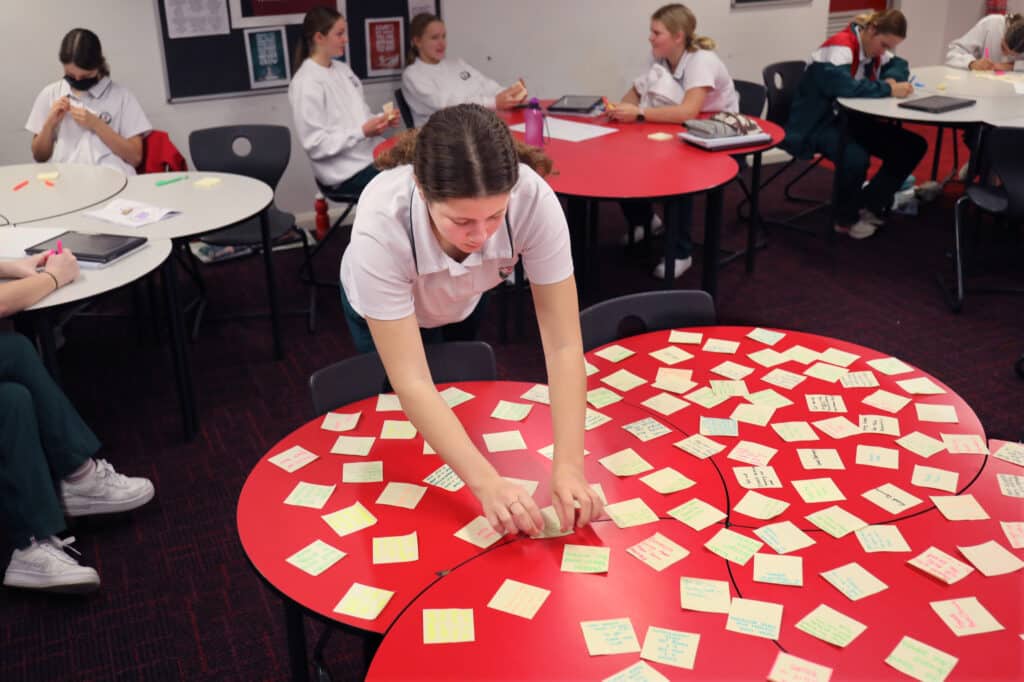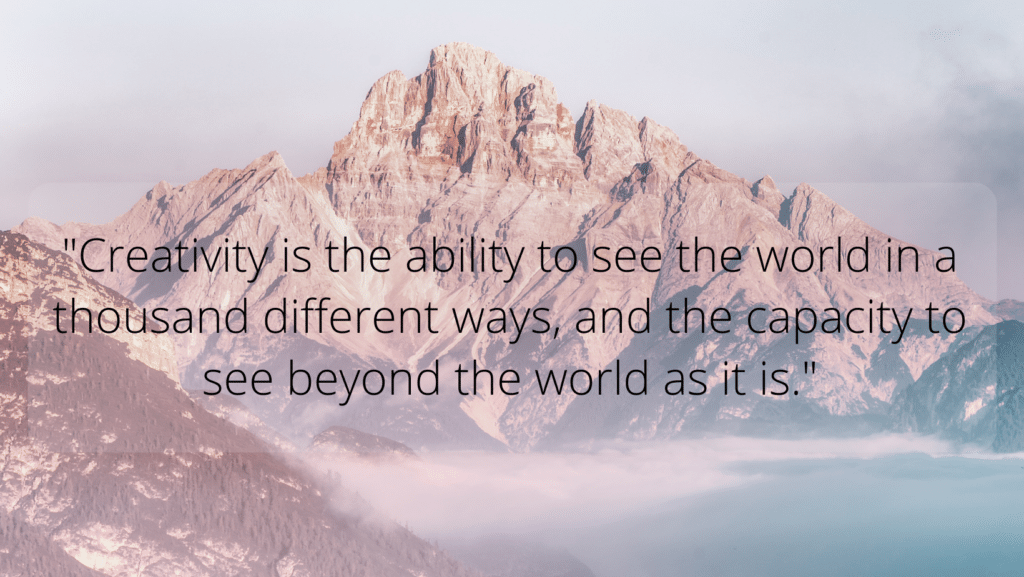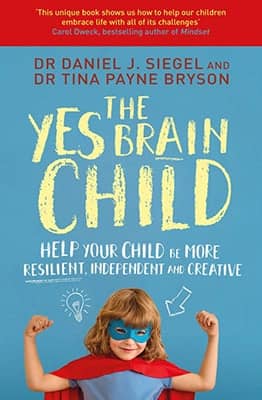Cultivating Creative Thinking – Jennifer Oaten

Do you describe yourself as creative? Many of us would not describe ourselves as creative, yet we are all creative! We often think of artists, writers, musicians, photographers and designers as creative; however, creativity is not just limited to these fields but encompasses many different contexts, such as education, science, technology, business, government and leadership.
In today’s fast-paced, evolving world, creativity is not just an asset but a necessity. It fuels innovation, solves complex problems, and enables us to navigate the uncertainty of the future. As Albert Einstein once said, “Imagination is more important than knowledge.” This statement rings particularly true in our current era, where the ability to think creatively is so highly valued.
Great examples of creativity that have changed our lives include the wheel, penicillin, light bulb, velcro, post-it notes, telephone, internet, nails, concrete, batteries, aeroplanes, refrigerators, vaccines, X Rays and iPhones, just to name a few.
In this blog, I will delve into the importance of nurturing creative thinking in our students and explore strategies to promote creativity in all students.
Environments Can Promote Creative Thinking
Research suggests creativity is determined much more by your upbringing, surroundings and mindset than by your genes, so creativity can be learned or developed. Each of us has a creative genius within us. Beliefs that only special, talented people are creative may diminish our confidence in our ability to be creative.
You can learn to be creative by experimenting, exploring, questioning, using imagination and synthesising information. It is thought that solitary activities provide some of the best opportunities for more creative thinking.
The physical environment in which learning takes place plays a crucial role in nurturing creativity. Flexible classrooms can stimulate students’ creativity by providing a variety of learning experiences. They allow for collaboration, movement, and interaction, all of which are conducive to creative thinking.
Teachers play a pivotal role in creating this kind of environment. By modelling empathy, openness, and a growth mindset, teachers can encourage students to take creative risks. Positive reinforcement, constructive feedback, and developing an emotionally safe and creative environment are important. Students should feel comfortable expressing their ideas and taking risks without fear of judgment.

How Schools Can Promote Creative Thinking
At Santa Maria College, creativity has been prioritised as an attribute of our Connecting Learning to Life strategy, which states attributes that we believe are important for all students to develop.
We aim to develop in our students:
- a belief that everyone is creative and has great ideas,
- and that they can all be creative together or alone.
- the more ideas, the better, we can then evaluate.
- respect all ideas, and radical ideas can be great ideas.
- believe that together, anything is possible, and they can change the world.
Visual Arts, Design, Materials Design & Technology, and Foods students provide many opportunities for developing skills of creativity, including those showcased recently with the exhibition and fashion parade. Many students developed resilience, taking risks to create original pieces that they showcased with pride and confidence.
Many activities, tasks, and assessments across Learning Areas encourage creativity, problem-solving, considering different perspectives, and developing and presenting different ideas and innovations.
Our emPower Programs in each year group are focussed on creative problem solving with opportunities offered to every student in Years 5 – 10.
- Fearless5 – making our school more environmentally friendly
- Spark6– using technology to improve the world
- Seek7– using water resources more sustainably
- Explore8– innovating to help the planet and the people in our community
- Strive9– collaborating to support marginalised people in our city
- Future10– making positive financial decisions for ourselves and our planet
Our Science electives, such as STengineers, Science Quest and Brainstem, focus on creative solutions to problems. Start Your Own Business provides opportunities for students to be creative in the business sense. Students established small businesses based on community research and work with a budget to develop, evaluate and market a product to their target audience. Our Women in Business co-curricular provides opportunities beyond the curriculum.

How Parents Can Promote Creative Thinking
1. Lead By Example: Don’t say, “Don’t worry, I’m not creative either”, because we all have potential, but we also need belief. Children often become self-conscious about stepping outside their comfort zone, so adults need to lead the way and promote creativity. Demonstrate your own enjoyment of creativity, whether it be painting, writing, furniture restoration, or another long-forgotten flair. If you don’t have one, perhaps it is time to explore different possibilities.
2. Inspire their thinking: Brainstorm together to come up with solutions to their problems, inspiring them to think outside the box, whether it be in relation to assessments, friendships, or new opportunities. Challenge them with questions that have no right answer. Instead of providing an answer, engage them in a conversation. Ask them what they think before offering an explanation. Celebrate unconventional solutions because this teaches young people that there is more than one way to approach a challenge. Instead of focusing solely on the ‘right’ answer, appreciate the thought process behind their solution. This builds confidence in their ability to think creatively.
3. Encourage Diverse Ideas: Encourage your children to have different viewpoints and that it is acceptable that these are not always shared by others. Encourage them to understand the need to support their beliefs and opinions and how to express these in a positive way without being dismissive of others’ opinions and ideas. Exposure to various activities, cultures, and environments enriches a young person’s understanding of the world. It cultivates empathy, adaptability, and a broader perspective.
4. Promote Bravery: The willingness to take risks is often stunted as kids become teens. They are much more acutely aware of the response of the world around them, and trying something new or participating in an activity that is out of their comfort zone can be challenging. It is important to foster the belief that creativity can bring challenges or disappointment, but that is normal. If you don’t try, you can never succeed. Being vulnerable is part of being creative, particularly if others are evaluating.
Research has demonstrated that every individual possesses innate creative potential. Being creative takes confidence, bravery and encouragement from educators and parents. Let us continuously strive to inspire, uplift, and support creativity in every student.
We need creative students to be the future change-makers in our world!

From the President: May 2024
We have some great stories in this month’s blog. Also Look out for information about our OGA Movie Night screening of The Way, My Way.

Lisa Sorger: Sisterhood Network Series
Join us for an inspiring evening at the second session of our Sisterhood Networking Series with Dr Lisa Sorger (Ramakrishnan, 1987).

OGA Movie Night: The Way, My Way
Join us for a screening of The Way, My Way, the true story of an Australian man’s transformative experience walking the Camino de Santiago.
- Featured
Author: Santa Maria College
Santa Maria College is a vibrant girls school with a growing local presence and reputation. Our Mission is to educate young Mercy women who act with courage and compassion to enrich our world. Santa Maria College is located in Attadale in Western Australia, 16 km from the Perth CBD. We offer a Catholic education for girls in Years 5 – 12 and have 1300 students, including 152 boarders.







